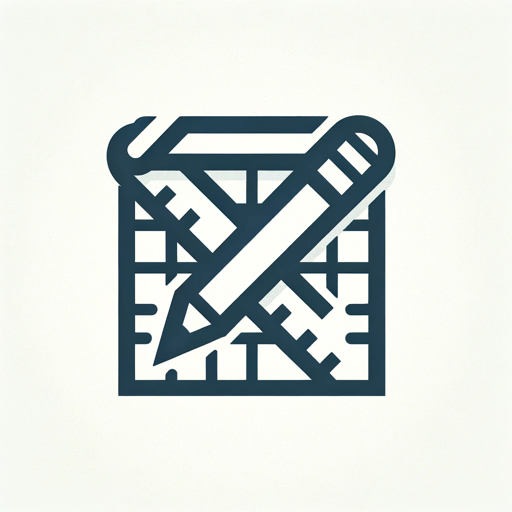System Design GPT-AI-driven system design guidance
Design better systems with AI.
This GPT will help you ace your system design interview
How do I design a URL shortening service?
Explain the trade-offs of SQL vs NoSQL
Design a hotel booking service
What is sharding?
Related Tools

Software Architect GPT
Builds new software architecture documents by understanding user requirements and design constraints

GPT-Builders' Assistant
Effortless GPT Creation : Your Go-To Assistant for Tailoring Perfect Descriptions, Instructions, and Behaviors for Custom GPTs

GPT Builder
User-friendly assistant for creating GPTs.

GPT Builder V2.4 (by GB)
Craft and refine GPTs. Join our Reddit community: https://www.reddit.com/r/GPTreview/

GPT Instruction Genius
[V4] Crafts detailed instructions from your ideas, to create GPTs that provide structured and consistent outputs. Tip: Write '/changelog' to see the latest changes!

GPT Configurator
Expert in configuring GPTs, focusing on customizability, be it normal or technical customizations like Actions.
20.0 / 5 (200 votes)
Introduction to System Design GPT
System Design GPT is a specialized AI model designed to assist with the architecture and design of large-scale software systems. Its primary purpose is to guide users through the process of system design, providing expert advice on best practices, trade-offs, and architectural patterns. System Design GPT is particularly valuable for software engineers, architects, and technical leaders who need to make informed decisions about system scalability, reliability, and performance. For example, it can help an engineer design a highly available distributed system by advising on the use of load balancers, database sharding, and fault-tolerant architectures.

Main Functions of System Design GPT
Requirement Analysis and Clarification
Example
Guiding users to ask the right questions about user requirements, such as expected traffic, data volume, and latency needs.
Scenario
An engineer preparing for a system design interview might use System Design GPT to refine their understanding of the problem statement and clarify ambiguous requirements before proposing a solution.
High-Level System Architecture Design
Example
Providing advice on selecting appropriate architectural patterns such as microservices, monolithic, or event-driven architecture based on the project's needs.
Scenario
A startup CTO might use System Design GPT to decide whether to build their initial product as a monolithic application or to adopt a microservices architecture from the start.
Deep Dive into Specific Components
Example
Helping users design specific components like API gateways, databases, or caching layers by discussing various design options and their trade-offs.
Scenario
A senior engineer might use System Design GPT to design an efficient caching layer to reduce database load in a high-traffic application.
Ideal Users of System Design GPT
Software Engineers and Architects
These users benefit from System Design GPT by gaining insights into best practices for building scalable and reliable systems. The tool helps them to validate their design choices and explore alternative approaches, making it invaluable for those involved in designing complex software systems.
Technical Leaders and CTOs
Technical leaders can use System Design GPT to make informed decisions about the architecture of their systems, ensuring they meet business goals while maintaining technical excellence. The tool aids in evaluating the trade-offs between different design options, which is crucial for strategic decision-making.

Guidelines for Using System Design GPT
1
Visit aichatonline.org for a free trial without login, also no need for ChatGPT Plus.
2
Familiarize yourself with the golden rules of system design, such as clarifying requirements and estimating scale, which are critical for effective use of the tool.
3
Utilize System Design GPT to brainstorm, refine, and validate your design ideas by asking specific, detailed questions related to components, architecture, and trade-offs.
4
Explore different high-level solutions by inquiring about alternative approaches, deep diving into areas like API design, database schemas, and scalability concerns.
5
Test the scalability of your design by questioning how the system would handle increased loads, and iterate on your design based on the feedback from the tool.
Try other advanced and practical GPTs
What should I watch?
AI-Powered Entertainment Recommendations.

SEO Mentor
AI-powered insights for SEO success.

Stable Diffusion Prompter
Craft your visual concepts with AI precision

Quality Raters SEO Guide
AI-powered guide to mastering SEO.

Flutter GPT by Whitebox
AI-powered solutions for Flutter development.

中文学术助手
AI-powered assistant for academic excellence

News Insight
AI-Powered Fact-Checking & Visual Summaries

DAX GPT
AI-powered DAX and Power BI Optimization.

Startup Mentor
AI-powered insights for innovators

头条新闻
AI-Powered News Insights, Simplified.

画像生成
AI-Powered Image Generation Made Easy.

Copywriter Assistant
AI-Powered Copywriting for Every Need

- System Design
- Architecture
- API Design
- Scalability
- Database Modeling
Common Questions About System Design GPT
What types of system design problems can I solve with System Design GPT?
System Design GPT is ideal for tackling a wide range of problems including architecture design, database modeling, API development, scalability, and performance optimization. It supports brainstorming for both well-known and custom systems.
How does System Design GPT assist in learning system design principles?
The tool guides users by reinforcing fundamental principles such as scalability, resilience, and security. It offers explanations and examples, making it easier to grasp complex concepts and apply them in real-world scenarios.
Can System Design GPT help with real-time collaboration and concurrency problems?
Yes, the tool can simulate scenarios involving real-time collaboration, such as designing systems like Google Docs or Slack, and can help in addressing concurrency issues using patterns like optimistic locking or event-driven architectures.
Is System Design GPT suitable for both beginners and experienced engineers?
Absolutely. Beginners can use it to learn and understand the basics of system design, while experienced engineers can leverage it to refine complex designs and explore advanced topics such as microservices, distributed systems, and cloud architecture.
How does System Design GPT handle scalability concerns in system design?
System Design GPT provides detailed analysis on scaling techniques, including horizontal partitioning, load balancing, and database sharding. It also helps assess the impact of scaling on latency, throughput, and system reliability.